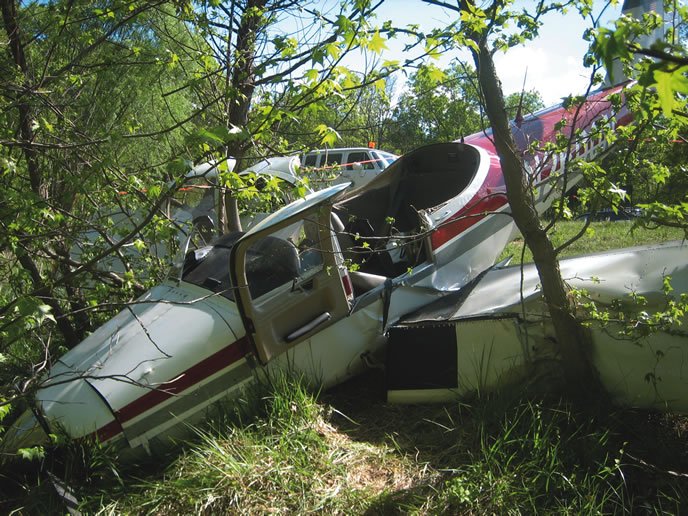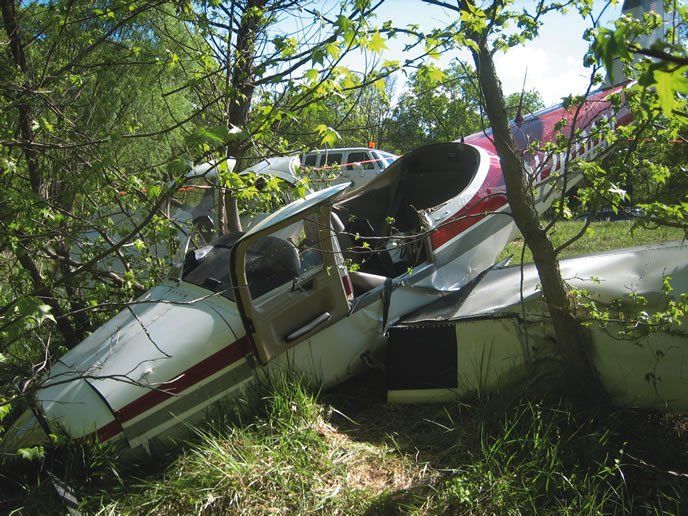Am I ready for this flight? Thats the question I found myself asking when I decided to resume flying in a rental aircraft after a six-month lapse. This was after selling the V35B Bonanza Id owned for eight years. Since I was due for a flight review anyway, I engaged an instructor and got checked out to fly a Cessna 172 from a local flight school. I was comfortable flying the Skyhawk after only an hour and three landings, despite not having flown in six months. That certainly wouldnt be the case for all the aircraft Im rated in: The last time I flew a jet was more than seven years ago.

In that 172 and in that airspace, I was ready. Throw in a different airplane, some weather, or unfamiliar airspace and the answer might be different. Which got me to thinking about different proficiency levels, and how any pilot might be just fine in some operations, but underperform in others. How might you organize training to address potential underperformance, and why? I suppose you could describe the proficiency question in a number of ways. Ill propose the following: basic stick-and-rudder skills, attitude instrument flying, automation, operating in the system and risk management.
The Basics
This seems pretty straightforward at first, but maybe it isnt. It really depends on the type and complexity of aircraft youre flying. Its one thing to be flying a Piper Archer and another to be cranking up a Piper Aerostar. I wouldnt feel comfortable in any multi-engine aircraft, actually, if only because basic stick-and-rudder proficiency demands recent experience in engine-out operation, and I had none.
Would I still be all right if I jumped in my old Bonanza after not having flown it in six months? Im sure I would have no problem, if only because I have so much time in one. But the real answer depends on the type of operation planned. Id have no qualms flying in VFR/VMC conditions, but would want to work my way up to a higher proficiency level before tackling low IFR conditions.
To an extent, our ability to jump from one aircraft model to another-especially after some inactivity-will depend on ones total flying experience. For example, its been a long time since I didnt feel comfortable flying a simple airplane on a good-weather day, even if I was a stranger to it. Yet there are times when were neither legal nor proficient, even if we have plenty of recent experience: Think a trans-Pacific 747 captain who hasnt seen the inside of a Skyhawk in 10 years.
I dimly recall a period when I felt comfortable tackling a new-to-me airplane without an instructor checkout. Ironically, with more than 9000 hours now, I would be much more leery of such a process. Its actually a perfect risk management problem Ill discuss shortly.
Attitude Instrument Flying
Attitude instrument flying demands separate attention in a self-assessment of your ability to operate safely in IMC conditions, yet it requires some of the basic stick-and-rudder skills you already should have. In addition to keeping the shiny side up, skill requirements include the basic instrument scan and required maneuvering for the departure, en route, arrival and approach phases of an instrument flight.
Interestingly, I found I could still perform basic attitude instrument flying within the practical test standards after a six-month lapse. My experience seems to have been backed up by a recent study conducted by a team of NASA and university researchers entitled, The Retention of Manual Flying Skills in the Automated Cockpit. The study measured the manual instrument skill (in a simulator) of 16 airline pilots who routinely flew the vast majority of their trips with nearly continuous automation. The study found that the …pilots instrument scanning and manual control skills to be mostly intact, even when pilots reported that they were infrequently practiced. On the other hand, the study also noted that …when pilots were asked to manually perform the cognitive tasks needed for manual flight…we observed more frequent and significant problems. Ultimately, the study …found that while pilots instrument scanning and aircraft control skills are reasonably well retained when automation is used, the retention of cognitive skills needed for manual flying may depend on the degree to which pilots remain actively engaged in supervising the automation.
The cognitive manual tasks the researchers were referring to include routine IFR tasks as tracking aircraft position without a moving map, deciding what navigational steps come next and recognizing instrument system failures. This gets to the heart of what pilots do in routine instrument flight and this can only be more complicated when automation issues are added, as well as routine operation in the system.
Automation
Theres been a vigorous debate regarding over-reliance on automation among both general aviation and airline pilots. The NASA study on skills retention seems to indicate experienced pilots have no problem reverting to manual flying skills when the automation is turned off, assuming they are aware that the automation is off. It would be interesting to determine whether relatively inexperienced general aviation pilots flying highly automated aircraft can also fly to standards after reverting to manual flying skills.
An equally important issue is how low levels of activity affect a pilots ability to operate the automation. A pilot flying a newer all-glass cockpit only 27.5 hours per year probably would find it even more challenging to maintain proficiency. Whether that becomes a risk will depend on how such a pilot can pull it all together during critical times.
Operating in the System
These three preceding levels of proficiency-basic stick-and-rudder skills, attitude instrument flying and automation-all come together when you use a high-performance personal airplane for what it was designed for: to go somewhere. Its in this environment where the rubber meets the road, and a pilot who flies infrequently may be tripped up by the need for frequent use of cognitive skills to maintain situational awareness while simultaneously flying the airplane in IMC conditions.
Throw in staying on top of the automation, dealing with ATC and other environmental conditions, and proficiency takes on new meaning. Poor task and workload management, magnified with poor automation proficiency can easily cause a pilot to experience a situation where the task saturation overcomes his less-than-proficient capabilities. I can see that this will be my biggest challenge when I decide I need to use an airplane to get somewhere again, perhaps in IMC conditions. In order to be ready for this, Ive tried to structure a currency and proficiency program to ensure that my manual flying, instrument and automation skills can come together efficiently when I need to operate in the system. The sidebar on page 5 summarizes my program.
Tying it all together
In my view, the most important dimension in maintaining proficiency is the application of risk management skills to your entire scope of operations and to use them rigorously on all your flights. Your motor and cognitive skills are needed for manual flying, attitude instrument flying, automation and flights in the system. However, risk management skills are relatively straightforward and easy to apply, once you learn the simple process of identifying, assessing and mitigating the risks a given flight can present. Despite their simplicity, the risk management process should be applied simultaneously to each of the other four dimensions of proficiency.
I certainly follow this sequence in all my flying, including proficiency flights. In my current situation, the risk factors are somewhat different than they were with the Bonanza. I really dont have as many external pressures to deal with, since Im not trying to fly somewhere for scheduled meetings or events. The airplane is less sophisticated, although the avionics can be more challenging. The environment is controllable within the scope of the proficiency flights I now make. The biggest risk factor is the pilot, yours truly, and Im constantly assessing my ongoing proficiency and ability to make a given flight.
Robert Wright is a former FAA executive and President of Wright Aviation Solutions LLC. He is also a 9600-hour ATP with four jet type ratings and holds a Flight Instructor Certificate. His opinions in this article do not necessarily represent those of clients or other organizations that he represents.




